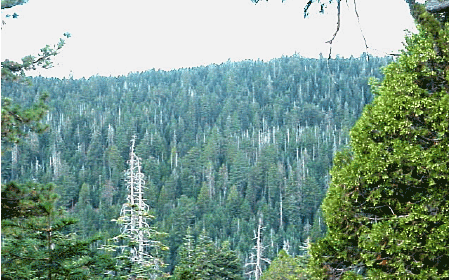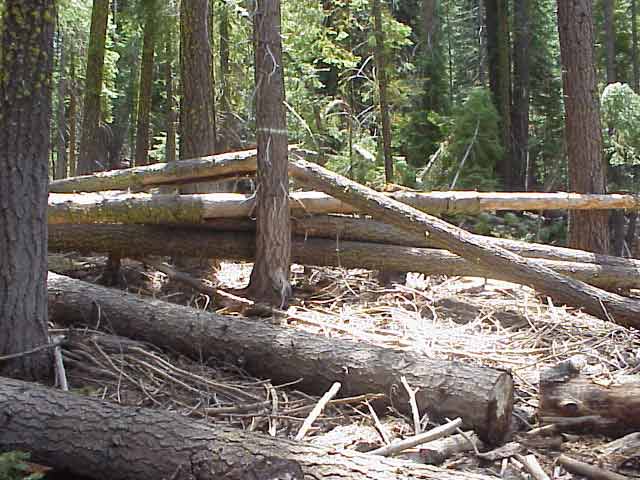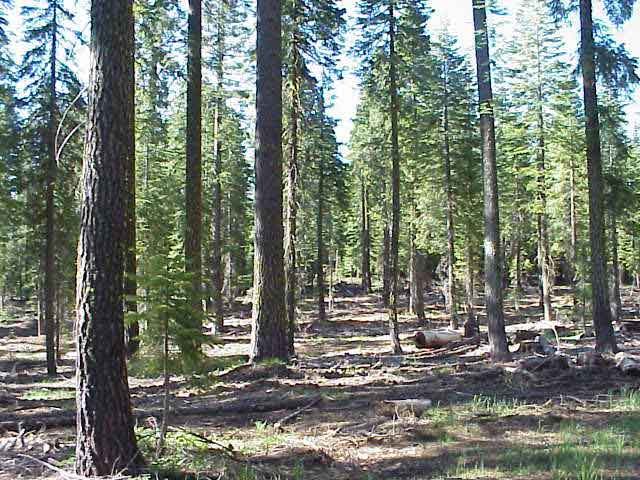The goal of this web page is to provide access to information related to a unique Forest Service forest restoration project undertaken as part of the 1995 Forest Health Pilot Project. The Forest Health Pilot Project was initiated with special funds allocated to the Lassen and Plumas National Forests and the Sierraville Ranger District of the Tahoe National Forest by Secretary Glickman, Department of Agriculture, to demonstrate some of the concepts envisioned by the Quincy Library Group.
With the understanding that "a picture is worth a thousand words", the intended audience for this educational page is those interested in Forest Service forest restoration projects designed to address excessive fuel accumulations.
The Hungry Creek project was unique in the manner in which it was designed, how the contractor was selected and the manner in which the restoration work was accomplished. The contractor himself was unique in the manner in which he pursued and implemented the innovative project. He has since been widely recognized within the logging industry as a pioneer in mechanized forest restoration.
A goal of the Hungry Creek project was to demonstrate the many benefits of a single-entry restoration treatment designed to achieve a detailed "desired condition". Project goals included the following:
• Reduce cumulative watershed affects,
• Decrease the impacts and disturbance to wildlife,
• Accomplish projects with smaller workforce,
• Reduce long-term project costs by only preparing and administering one contract,
• Reduce the risk of catastrophic fire by removing all products (slash).
| Project Information | |
| Landscape Views |  |
| Fuel Conditions |  |
| Specialized Equipment |  |
| Post Treatment |  |
| Lessons Learned | |
| Thank you to Mr. Bill Wickman Region 5, US Forest Service for developing the case study information, Mr. Randy Pew of Pew Forest Products for the many excellent photographs and to Mr. Richard Bednarski for his assistance in gathering information. | |